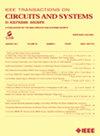基于增强U-Net结构的t1加权MRI脑肿瘤定位与分割
IF 4.9
2区 工程技术
Q2 ENGINEERING, ELECTRICAL & ELECTRONIC
IEEE Transactions on Circuits and Systems II: Express Briefs
Pub Date : 2025-04-01
DOI:10.1109/TCSII.2025.3556846
引用次数: 0
摘要
磁共振成像(MRI)扫描的检测和分割是医学成像中的一项关键任务,由于不同MRI模式的肿瘤形状、大小、强度和边界定义的变化,实现高分割精度和可靠性仍然具有挑战性。最近,深度学习技术显著提高了包括脑肿瘤分析在内的各个医学领域的定位和分割效率。本文介绍了一种新的两阶段方法,用于在t1加权对比增强MRI (CE-MRI)扫描中进行脑肿瘤分割,利用YOLO(你只看一次)和改进的U-Net。在第一阶段,使用YOLO快速准确地定位脑肿瘤存在的感兴趣区域(roi)。为了加快这一步骤,引入了YOLOv3,提高了模型的计算速度和效率。在第二阶段,利用改进的U-NET模型,增强空间和通道注意模块,对已识别roi内的肿瘤进行精确分割。使用精度、召回率、Jaccard指数和骰子相似系数(DSC)等指标来评估所提出框架的性能。与以前使用相同数据库的方法相比,我们的方法显示了有希望的结果。本文章由计算机程序翻译,如有差异,请以英文原文为准。
Enhanced U-Net Architecture for Brain Tumor Localization and Segmentation in T1-Weighted MRI
Detection and segmentation of Magnetic Resonance Imaging (MRI) scans is a critical task in medical imaging, where achieving high segmentation precision and reliability remains challenging due to variations in tumor shape, size, intensity, and boundary definition across different MRI modalities. Recently, deep learning techniques have significantly improved the efficiency oflocalization and segmentation of various medical fields, including brain tumoursanalysis. This brief presents a novel two-stage approach for brain tumour segmentation in T1-weighted contrast-enhanced MRI (CE-MRI) scans, leveraging both YOLO (you only look once) and Modified U-Net. In the first stage, YOLO is employed to quickly and accurately localize regions of interest (ROIs) where brain tumours are present. To accelerate this step, YOLOv3 are incorporated, improving the computation speed and efficiency of the model. In the second stage, a modified U-NET model, enhanced with spatial and channel attention modules, is utilized to perform precise segmentation of the tumours within the identified ROIs. The performance of the proposed framework is evaluated using metrics including precision, recall, Jaccard index, and Dice similarity coefficient (DSC). Our approach demonstrates promising results compared to previous methods using the same database.
求助全文
通过发布文献求助,成功后即可免费获取论文全文。
去求助
来源期刊
CiteScore
7.90
自引率
20.50%
发文量
883
审稿时长
3.0 months
期刊介绍:
TCAS II publishes brief papers in the field specified by the theory, analysis, design, and practical implementations of circuits, and the application of circuit techniques to systems and to signal processing. Included is the whole spectrum from basic scientific theory to industrial applications. The field of interest covered includes:
Circuits: Analog, Digital and Mixed Signal Circuits and Systems
Nonlinear Circuits and Systems, Integrated Sensors, MEMS and Systems on Chip, Nanoscale Circuits and Systems, Optoelectronic
Circuits and Systems, Power Electronics and Systems
Software for Analog-and-Logic Circuits and Systems
Control aspects of Circuits and Systems.

 求助内容:
求助内容: 应助结果提醒方式:
应助结果提醒方式:


